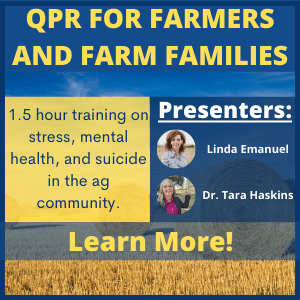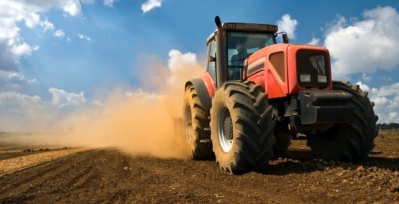Last updated on June 15th, 2024 at 05:56 pm
Alcohol Use Resources
Agriculture is a solid anchor for our rural communities. Yet alcohol use in rural America continues to be a growing problem, threatening the stability of the agricultural family. The 2020 National Survey on Drug Use and Health in adults and adolescents signals an alarm for rural Americans. The survey compared people in large and small metro areas, non-metro urbanized areas, and completely rural areas. The percentage of adults ages 26 and older living in “completely rural” areas who engaged in heavy drinking in the past month increased between 2019 and 2020, making “completely rural” the area with the highest percentage of heavy drinkers. Heavy alcohol use in the past month in the Midwest region jumped from 6.6% in 2019 to 8.3% in 2020. The Midwest, which produces 80% of US soybeans and 90% of US corn, had the highest percentage of heavy alcohol use in all geographic region types (SAMSHA, 2021). Rural areas account for 45% of all U.S. alcohol-related fatalities, with almost 30% of rural traffic deaths being alcohol- related. These numbers are significant when you factor in that only 14% of the U.S. population lives in rural areas (USDA-ERS, 2019).
Drinking at an early age increases the risk of problem drinking as we get older. Compared to adolescents in large metro areas, rural adolescents (ages 12-20) have higher rates of:
- Alcohol Use
- Binge Drinking
- Heavy Alcohol Use
- Driving Under the Influence
Total Farmer Health places the family at the center and begins with our agricultural youth.
Some positive social factors that play a role in alcohol choices for rural adolescents include:
- Lower level of underage drinking.
- Disapproval from parents.
Some negative social factors that play a role in alcohol choices for rural adolescents include:
- Peer acceptance of alcohol use.
- Alcohol access at family events.
- Isolation.
- Lack of mental health support and services for rural residents, particularly youth.
While alcohol education is a mainstay of youth prevention programming, parental influence has been the foremost protective factor in preventing youth drinking behaviors (Maine Rural Health Research Center, 2012). For rural adults, this requires self-critique and honesty about our attitudes and practices that may encourage unsafe drinking behaviors. Supporting agricultural families to have informed conversations about alcohol use and access is a step in the right direction for agricultural producers today and tomorrow.
For this and more information visit RHIhub and SAMHSA.
Alcohol Use Resources
For the Producer
- Alcohol Use Disorder from MedlinePlus
- Comorbidity: Substance Use and Other Mental Disorders Infographic
Treatment Options
For the Employer
For the Healthcare Providers
Articles
Evidence-Based Resources
- Substance Use Disorders Recovery with a Focus on Employment and Education
- Telehealth for the Treatment of Serious Mental Illness and Substance Use Disorders
Screening Tools
- National Institute on Alcohol Abuse and Alcoholism Screening Tests
- New Technologies Used to Reduce Excessive Drinking
- Screening, Brief Intervention, and Referral to Treatment from the Substance Abuse and Mental Health Services Administration (SAMHSA)
Webinars
| Webinar Title | Summary | Link |
|---|---|---|
| Agriculture and Alcohol Use | The Substance Abuse and Mental Health Service Administration report that approximately 20.1 million people aged 12 or older had a substance use disorder related to their use of alcohol or illicit drugs. However, little is known about the prevalence of substance use in the ranching and farming community due to stigma and the lack of research in this population. This webinar will focus on the prevalence of substance use in rural areas through the results of health screening efforts in agricultural work settings. |
Page updated: January 2024




